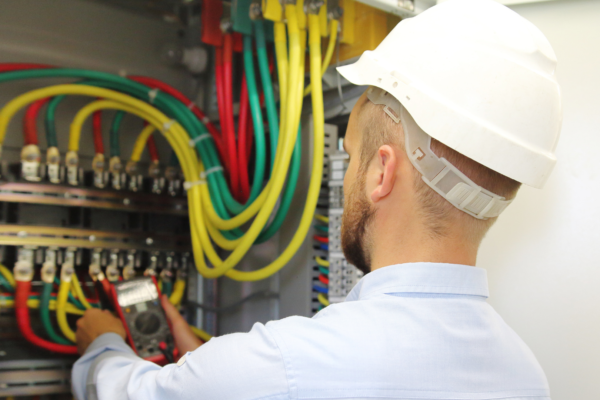Introduction to Smart Lighting: What Are Smart Lighting Systems?
Denali-ep
| 14 de octubre de 2024
Introduction to Smart Lighting: What Are Smart Lighting Systems?
Smart lighting has transformed how we interact with lighting in homes and offices. More than just light bulbs, these systems combine advanced technology with features that allow unprecedented control over lighting, enhancing energy efficiency, security, and convenience. But what exactly are smart lighting systems, and how do they work?
History and Evolution of Smart Lighting
The journey of smart lighting started with the introduction of LED bulbs, which offered higher energy efficiency and longer lifespan compared to traditional incandescent bulbs. Over time, wireless connectivity and sensor technologies enabled the development of smart bulbs and lighting systems that could be controlled remotely, laying the foundation for the smart lighting solutions we know today.
How Does Smart Lighting Work?
Smart lighting systems use a combination of LED bulbs, smart switches, sensors, and connection to a home network, typically via Wi-Fi, Zigbee, or Z-Wave. These components communicate with each other and a central control device, like a smartphone or tablet, through a dedicated app. This allows users to remotely control the lights, set schedules, adjust brightness and color, and much more.
Key Components of a Smart Lighting System
- Smart Bulbs: The core of any smart lighting system, these bulbs can be remotely turned on and off, and allow users to adjust the brightness and color to create different atmospheres.
- Smart Switches and Plugs: These allow you to control lights and other connected devices without replacing existing bulbs, providing additional flexibility.
- Sensors and Remote Controls: Motion sensors and remote controls add an extra layer of functionality. Sensors detect occupancy and adjust lighting accordingly, while remote controls offer quick access to the system.
Advantages of Smart Lighting Systems
- Energy Savings: One of the key benefits of smart lighting is its ability to reduce energy consumption. The LED bulbs used are more efficient than traditional bulbs, and when combined with features like scheduling and brightness adjustment, they can significantly lower energy bills.
- Convenience and Comfort: Controlling your lighting from anywhere via a mobile app offers unparalleled convenience. You can turn on lights before arriving home, adjust them from bed, or switch them all off with a single voice command.
- Enhanced Security: Smart lighting systems can improve your home's security by allowing you to schedule lights to turn on and off at specific times, giving the appearance that someone is home even when you're not. Additionally, lights can be integrated with security systems to automatically illuminate certain areas when motion is detected.
- Customization and Control: Smart lighting gives you full control over the atmosphere in your home. You can create custom scenes for different times of day or activities, such as romantic dinners, movie nights, or energizing mornings.

Types of Smart Lighting Systems
- Wi-Fi-Based Systems: These systems use your home's Wi-Fi network to connect and control bulbs and other devices. They are easy to install and configure but may strain your network if too many devices are connected.
- Zigbee and Z-Wave Systems: These communication protocols are specifically designed for smart home devices. They create a mesh network for more efficient and reliable communication, though they may require a central hub to operate.
- Hybrid Systems: These combine the strengths of Wi-Fi-based and Zigbee/Z-Wave systems, offering greater flexibility and reliability.
How to Install a Smart Lighting System
- Preparation and Planning: Before starting, plan where you'll place the bulbs and devices, and make sure you have all necessary components. Consider the coverage of your Wi-Fi network and the availability of outlets.
- Hardware Installation: Installing smart bulbs is usually as easy as screwing in a new bulb. Smart switches and plugs might require more effort, potentially involving electrical wiring.
- Software Setup: After installing the hardware, the next step is to set up the software. Download the appropriate app, create an account, and follow the instructions to connect and configure your devices.
Popular Apps for Smart Lighting Control
- Philips Hue: One of the most well-known smart lighting systems, offering a wide range of products and features.
- LIFX: Another popular choice, known for its high-quality bulbs and ease of use.
- TP-Link Kasa: Offers good value for money and is compatible with many other smart home devices.
- Google Home and Amazon Alexa: These voice assistants can also control smart lighting systems, providing seamless integration with other smart devices in your home.
Integrating Smart Lighting with Other Smart Home Devices
Integrating smart lighting with other devices like security cameras, thermostats, and voice assistants can create a truly connected home. Most smart lighting apps allow integration with other devices, making it easy to create personalized scenes and automations.
Example Scenarios for Smart Lighting Use
- Energy-Saving Scenarios: Set lights to automatically turn off when no motion is detected to reduce energy consumption.
- Security Scenarios: Configure lights to turn on when outdoor motion is detected to deter intruders.
- Entertainment Scenarios: Create customized lighting scenes for movie nights or parties to enhance the home entertainment experience.
Future Trends in Smart Lighting
Smart lighting is continuing to evolve, with emerging trends such as greater integration with artificial intelligence, advanced sensors for more precise control, and the use of more sustainable technologies.
Myths and Realities of Smart Lighting
- Myth: Smart lighting is too expensive.
- Reality: While the initial costs may be high, the energy savings and convenience make it a worthwhile investment in the long run.
- Myth: Smart lighting is complicated to install.
- Reality: Most smart lighting systems are designed to be easy to install and configure, even for people with little technical experience.
Tips for Maintaining and Updating Your Smart Lighting System
Keep your system up to date with the latest firmware and app versions to ensure it works properly and benefits from the latest features and improvements.
Environmental Impact of Smart Lighting
Smart lighting not only reduces your electricity bill but also has a positive impact on the environment by cutting energy consumption and extending the lifespan of bulbs.
Conclusion
Smart lighting represents a significant evolution in how we interact with lighting in our homes and offices. With its ability to save energy, improve security, and offer personalized control, these systems are a worthwhile investment for any modern home.
What is smart lighting, and how does it work?
Smart lighting refers to lighting systems that can be controlled remotely using a smartphone, tablet, or voice assistant. These systems use LED bulbs, smart switches, sensors, and wireless networks (like Wi-Fi, Zigbee, or Z-Wave) to allow users to adjust brightness, color, and set schedules or automation rules from anywhere.
What are the benefits of smart lighting?
Smart lighting offers several benefits, including:
Energy savings by using LED bulbs and setting lights to turn off automatically when not needed.
Convenience through remote control and voice commands.
Enhanced security by scheduling lights to turn on/off while you’re away.
Customization to create specific lighting moods for activities or times of day.
Can I integrate smart lighting with other smart home devices?
Yes, smart lighting systems can be integrated with other smart devices like security cameras, thermostats, and voice assistants (e.g., Amazon Alexa or Google Home) to create a fully connected smart home environment. This allows automation, such as turning lights on when motion is detected or adjusting brightness based on the time of day.
Are smart lighting systems difficult to install?
Smart lighting systems are generally easy to install. Smart bulbs can be screwed into existing sockets, while smart switches and plugs may require basic electrical work. Once installed, you can set up and control the system through an app, which typically provides step-by-step instructions.
Do smart lights consume more energy when connected to Wi-Fi or a hub?
Smart lights use very little additional energy when connected to Wi-Fi or a hub. LED bulbs used in smart lighting systems are highly energy-efficient, and the energy used for connectivity is minimal compared to the overall energy savings from features like dimming and automation.




